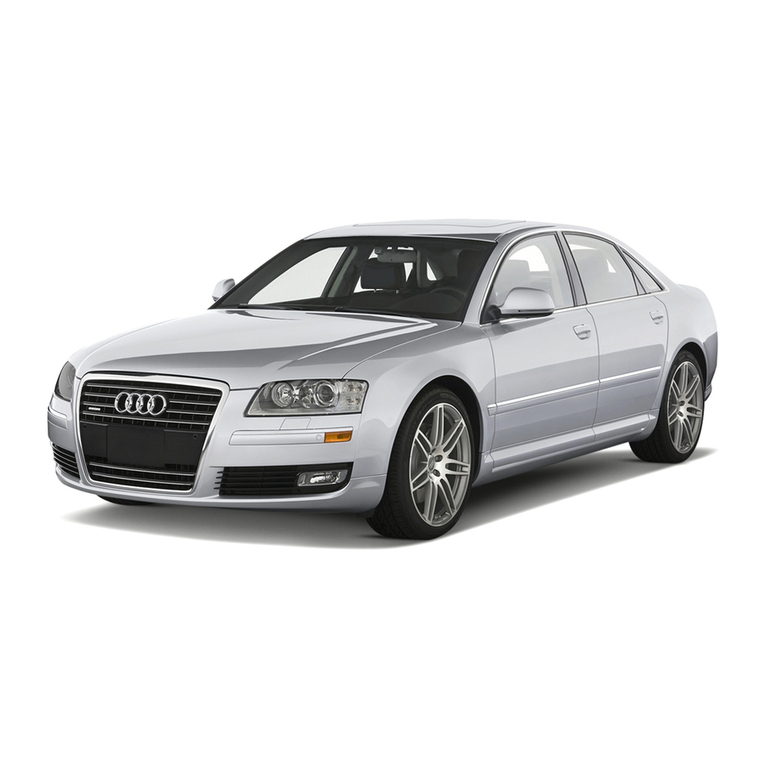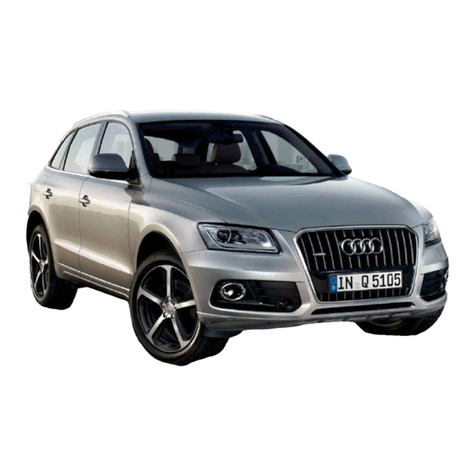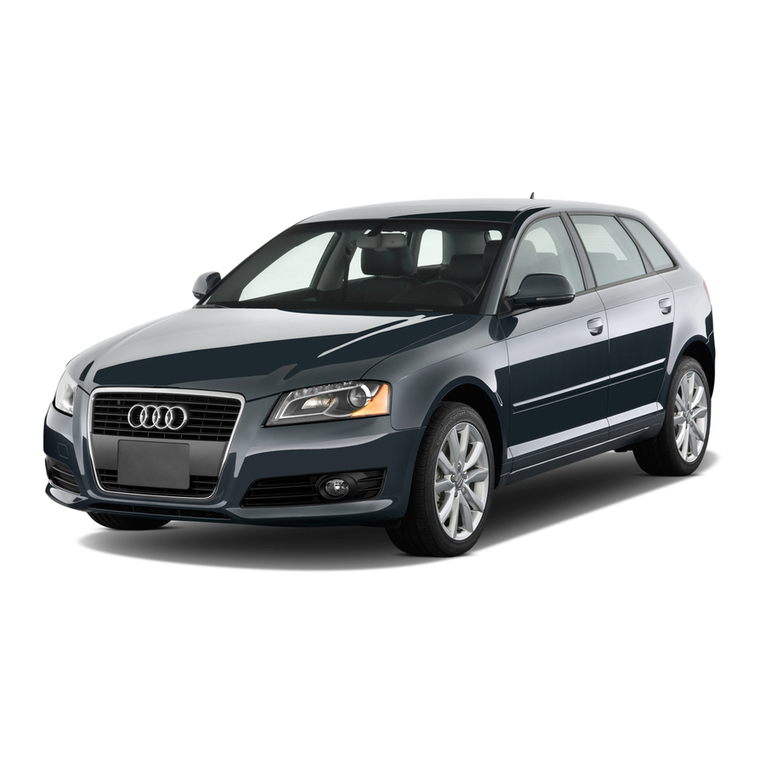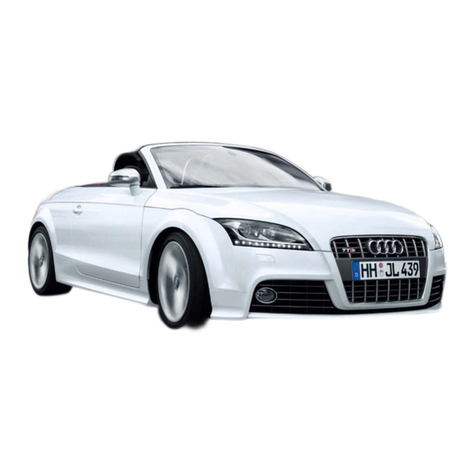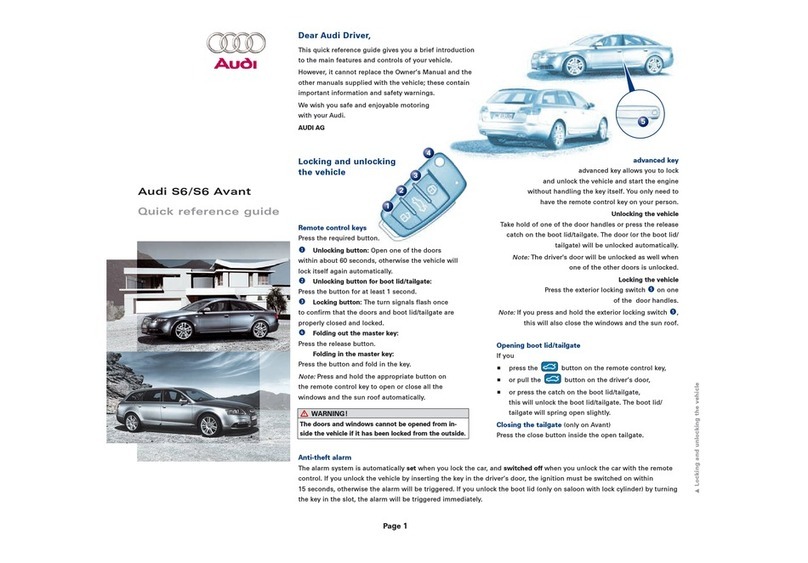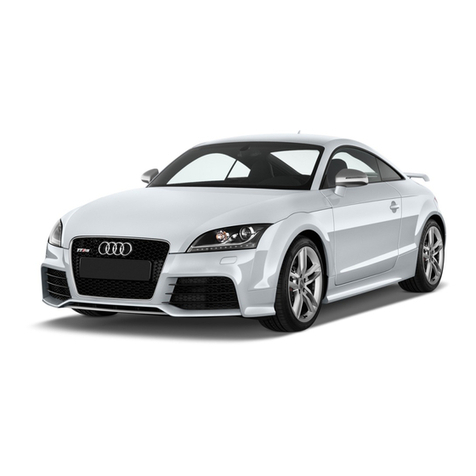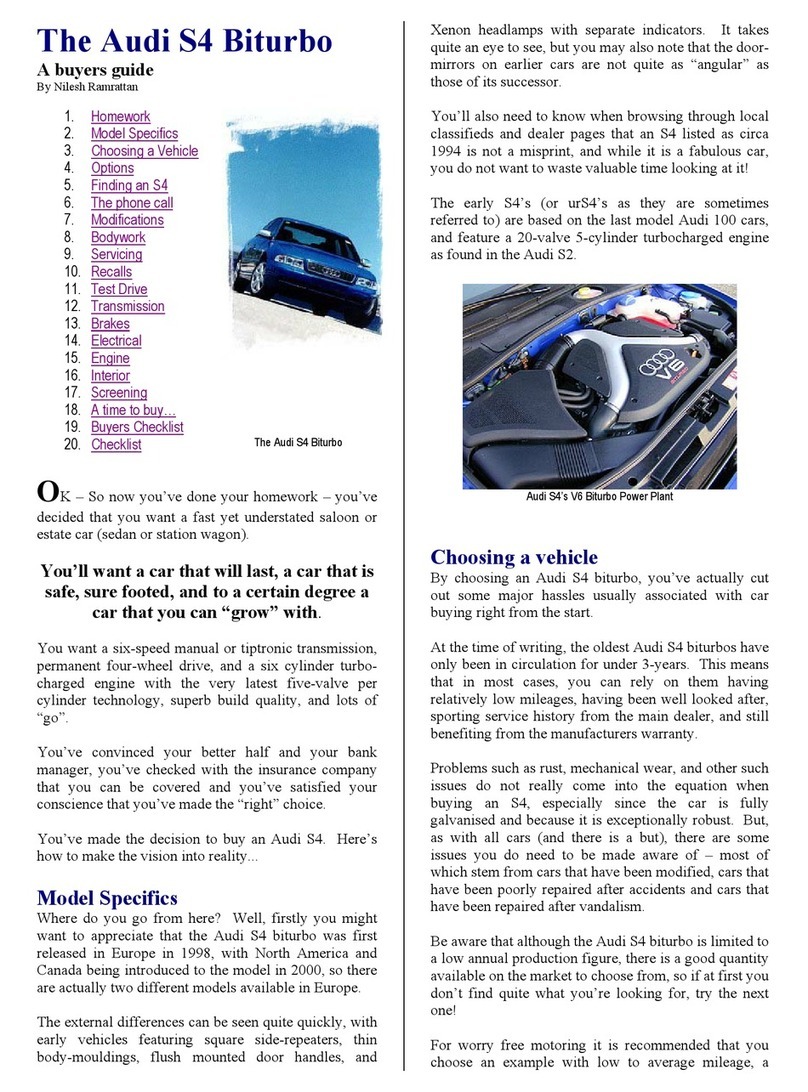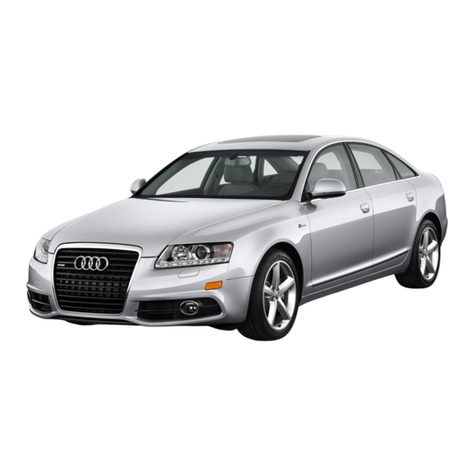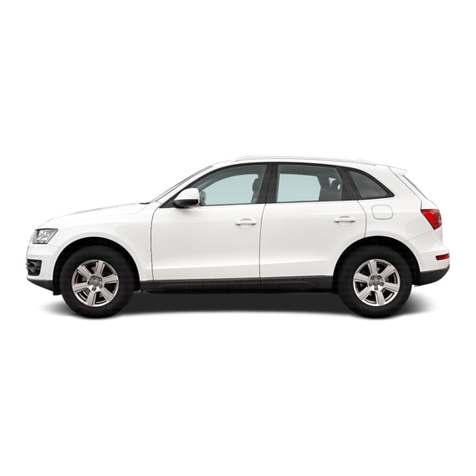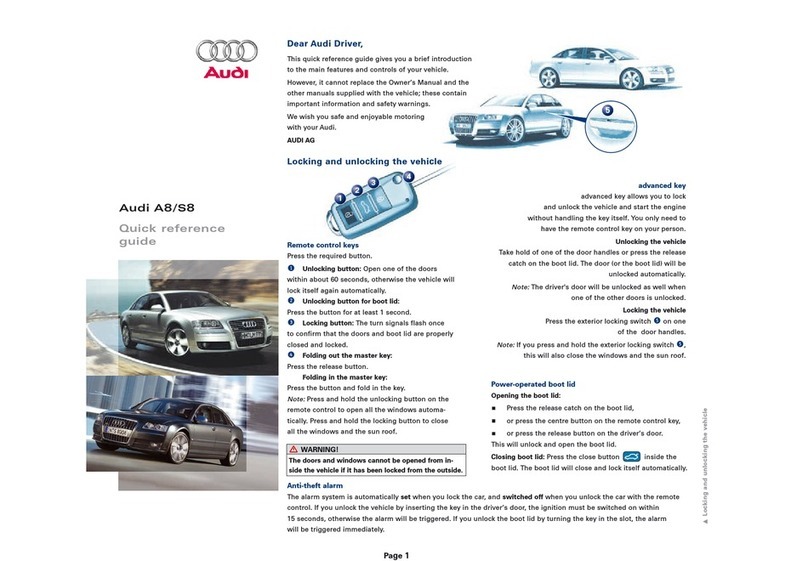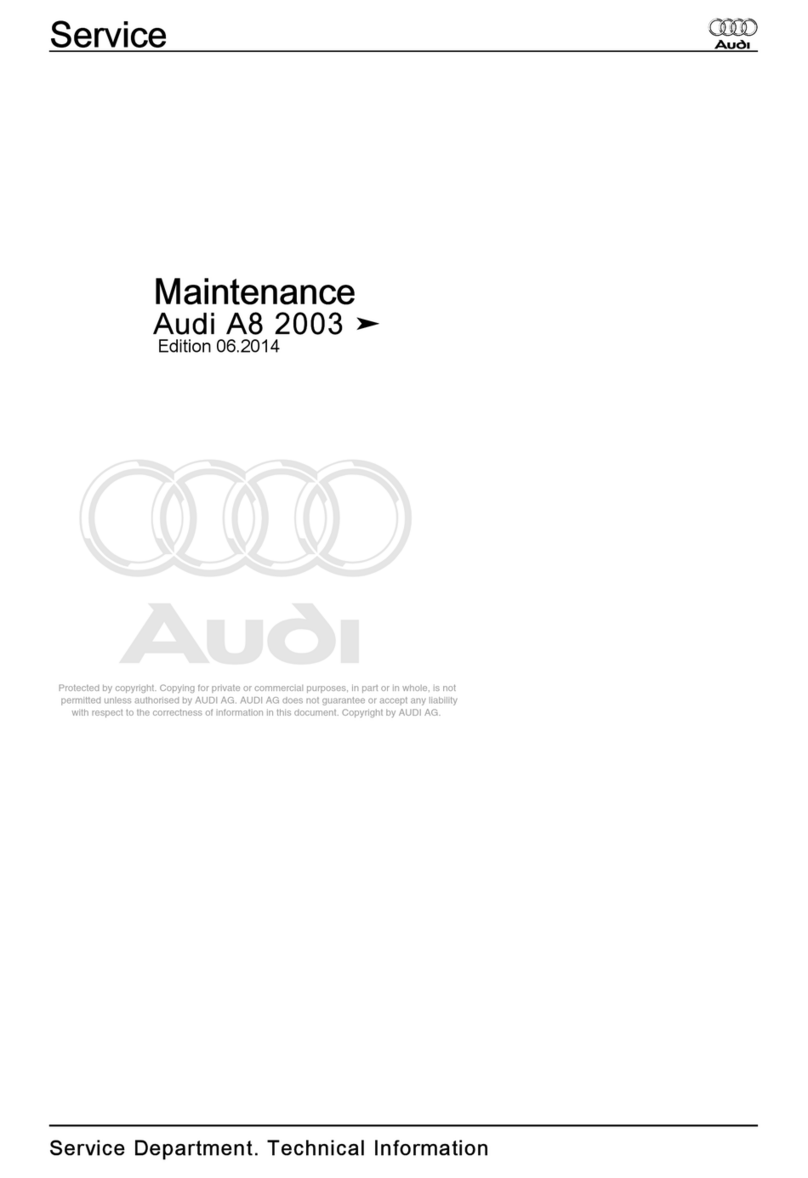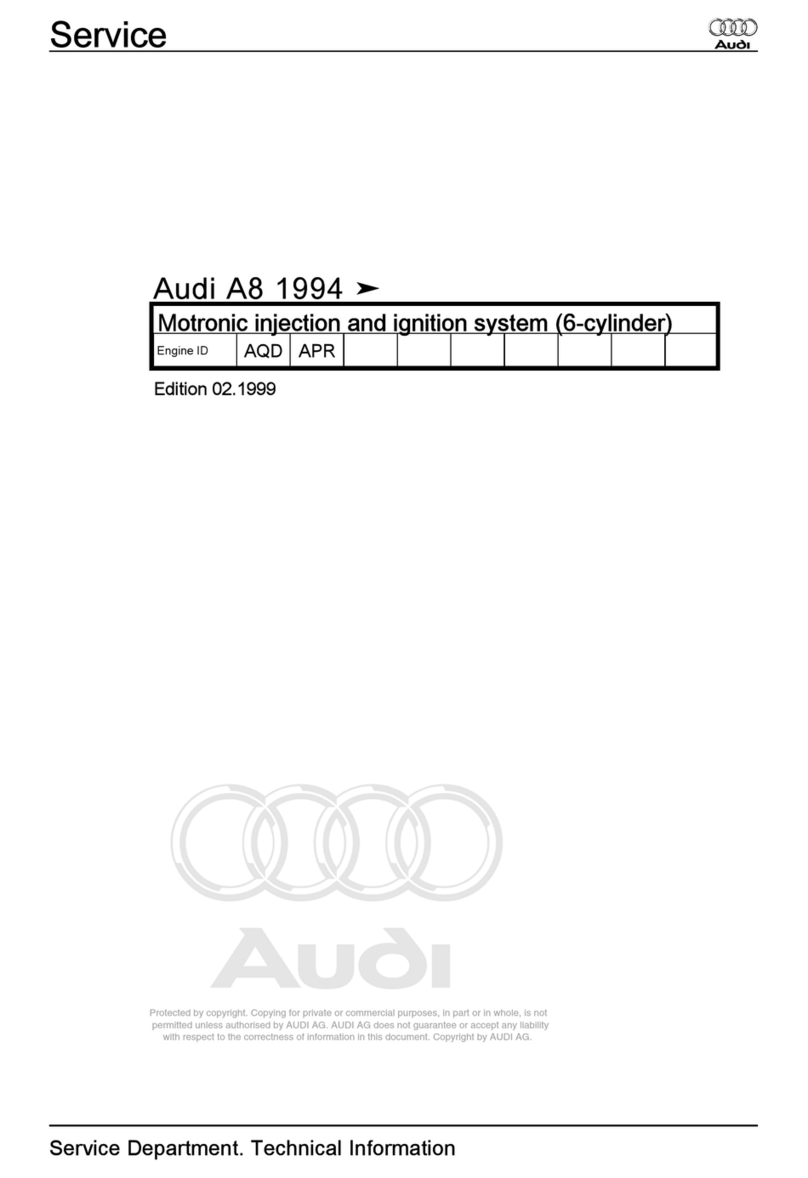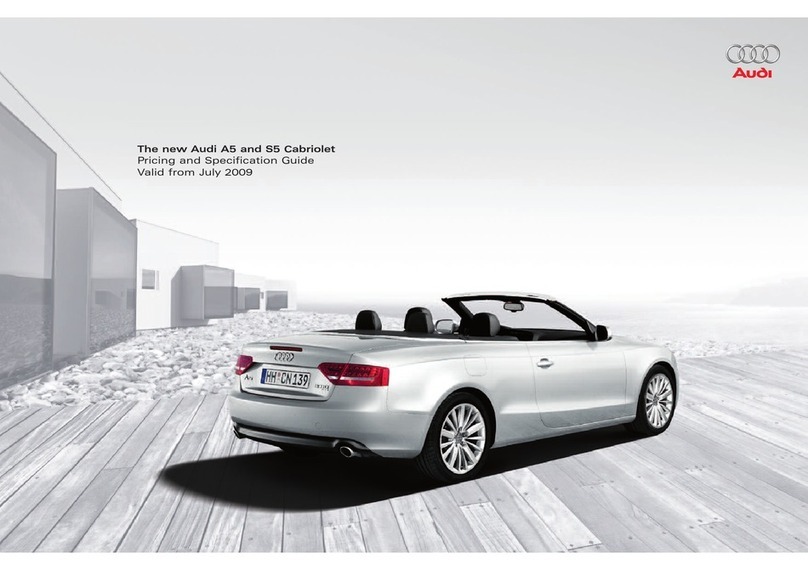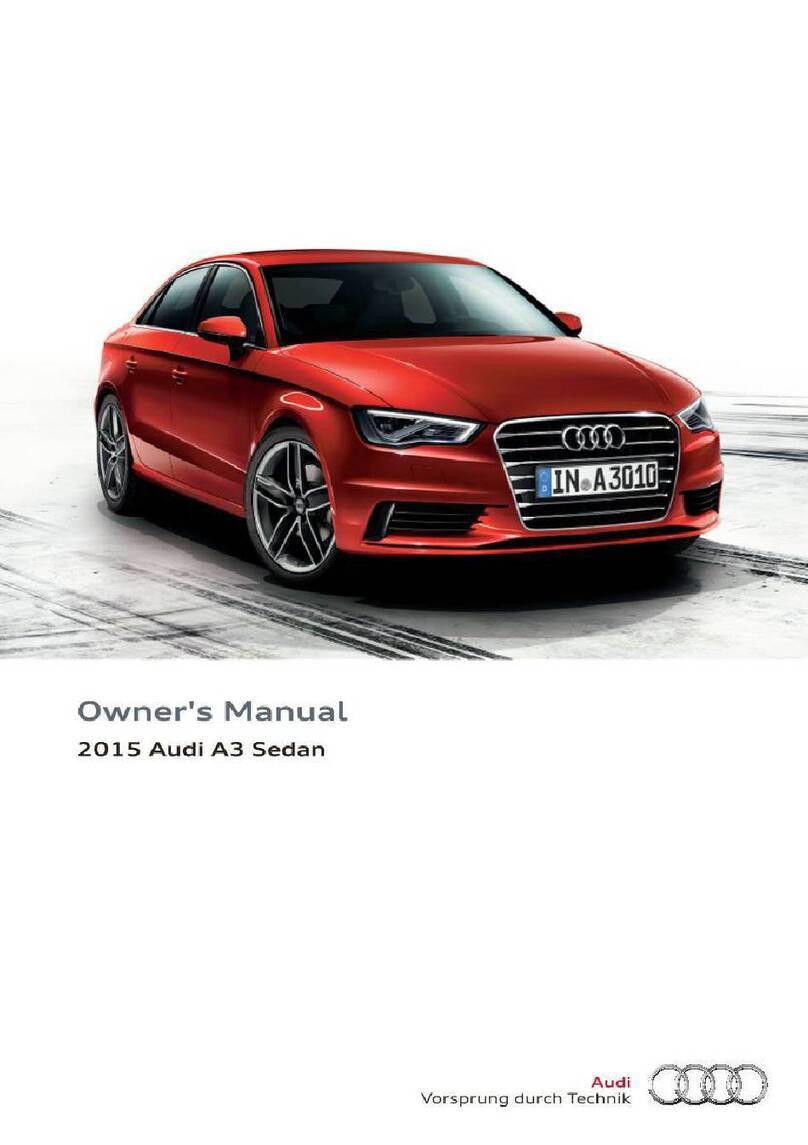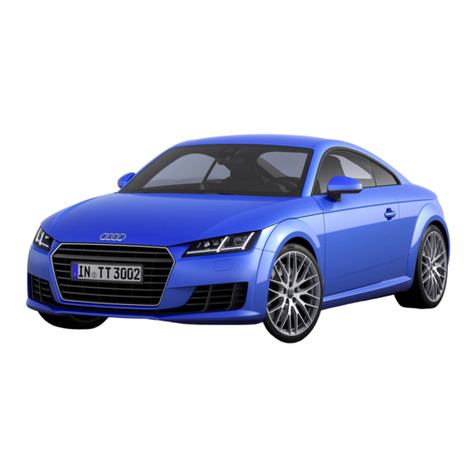
Please read these WARNINGS and CAUTIONS before
proceeding with maintenance and repair work.
• If you lack the skills, tools and equipment, or a
suitable workshop for any procedure described
in
this manual,we suggestyou leavesuch repairs toan
authorized Audi dealer or other qualified shop. We
especially urge you to consult an authorized Audi
dealer before beginning repairs
on
any car that may
still be covered wholly or in part by any of the
extensive warranties issued by Audi.
• Audi is constantly improving its cars and some-
times these changes, both in parts and specifica-
tions, are made applicable to earliermodels. There-
fore, part numbers listed in this manual are for
reference only. Always check with your authorized
Audi dealer parts departmentfor the latest informa-
tion.
• Never work under a lifted car unless it is solidly
supported on stands designed for this purpose. Do
not support a car on cinder blocks, hollow tiles or
other props that may crumble under continuous
load. Neverwork undera carthat is supportedsolely
by ajack. Neverwork underthe carwhile the engine
is running.
• Ifyou aregoing to workunderacar
on
the ground,
make sure thatthe ground is level. Block the wheels
to keep the car from rolling. Disconnect the battery
Ground (GND) strap to prevent others from starting
the car while you are under it.
• Neverrun the engine unless the work area is well
ventilated. Carbon monoxide kills.
• Tie long hair behind your head.
Do
not wear a
necktie, a scarf, loose clothing, ora necklace when
you work near machine tools or running engines. If
your hair, clothing, or jewelry were
to
get caught in
the machinery, severe injury could result.
• Illuminate the work area adequately but safely.
Use a portable safety light for working inside or
underthe car. Make sure the bulb is enclosed by a
wire cage. The hot filament of an accidentally
broken bulb can ignite spilled fuel or oil.
• Finger rings should be removed so that they
cannotcause electrical shorts, getcaught in running
machinery, or be crushed by heavy parts.
• Disconnectthe batteryGround
(G
NO)
strapwhen-
ever you work
on
the fuel system or the electrical
system. Do notsmoke orwork nearheaters orother
fire hazards. Keep an approved fi
re
extinguisher
handy.
• Anytime the battery has been disconnected itwill
be necessary to reestablish Basic Settings for the
Engine Control Module (ECM) and, on vehicles with
automatic transmissions, the Transmission Control
Module (TCM), using the VAG
1551
Scan Tool (ST).
• On cars equipped with anti-theft radios, make
sure you know the correct radio activation code
before disconnecting the battery or removing the
radio. If the wrong code is entered into the radio
when power is restored, that radio may lock up and
be rendered inoperable, even if the correct code is
then entered.
• Do not attempt
to
work
on
your vehicle
if
you do
not feel well. You increase the danger of injury to
yourself and others if you are tired, upset or have
taken medicine or any other substance that may
impair you from being fully alert.
• Always observe good workshop practices. Wear
goggles when you operate machine tools or work
with battery acid. Glovesorotherprotectiveclothing
should be worn whenever the job requires working
with harmful substances.
• Do not re-use any fasteners that are worn or
deformed in normal use. Many fasteners are de-
signed to be used only once and become unreliable
and may fail when used a second time. This in-
cludes, but is not limited to, nuts, bolts, washers,
self-locking nuts or bolts, circlips, cotter pins. Al-
ways follow recommendations given
in
this publica-
tion. Always replace these fasteners with newparts.
• Friction materials such as brake pads and clutch
discs may contain asbestos fibers. Do not create
dust by grinding, sanding, or by cleaning with com-
pressed air. Avoid breathing asbestos fibers and
asbestos dust. Breathing asbestos can cause seri-
ousdiseasessuch as asbestosis orcancer, and may
result
in
death.
IGeneral Information I Warnings/Cautions

